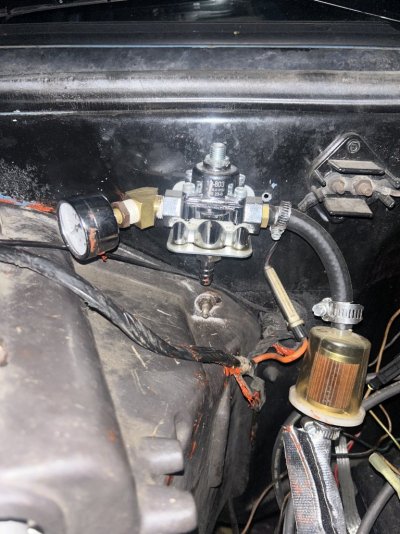Bextreme04
Full Access Member
- Joined
- May 13, 2019
- Posts
- 4,464
- Reaction score
- 5,630
- Location
- Oregon
- First Name
- Eric
- Truck Year
- 1980
- Truck Model
- K25
- Engine Size
- 350-4bbl
That's not vapor lock. What's happening is that the pressure in the line is dropping after it goes through the regulator. Since you have the fuel sitting in the line between the pump and regulator, right next to the exhaust, the fuel is getting hot enough that when the pressure drops it flash boils. When it flash boils, the liquid turns into a vapor that then takes up significantly more volume and the pressure in that section of hose between the regulator and carb jumps up. That spike in pressure pushes the fuel in front of it past the needle and seat in the carb and floods the engine. That's why you are getting the ploom of smoke from it being pig rich.This was my bright idea thinking it was more efficient. Pump is mounted on the frame rail down by the tank. I can see it bubbling in the clear filter when parked after running if I'm on it hard, and that fuel has not return so its just sitting there. I notice also when driving and cruising after a while, it gets a little boggy when I hit the throttle as if its flooding, and restarts are a bit delayed as well. not sure if that's due to to that issue though, just have to pump the gas a few times and BLOOOOOOM, were running, with a little ploom of smoke of course lol
I think you will solve all your problems by running a regulator with a return line to keep that fuel before the regulator constantly flowing so that it doesn't get as hot. The holley regulator that @Tonimus gave you the part number for above is a great option. The summit page for it shows that people are using that regulator for TBI to carb swaps and even an application using a 40psi EFI pump.
I would put that regulator as close to the carb as possible and get rid of the filter between the regulator and carb. Run a good filter directly after the pump on the frame rail. Using rubber or nylon braided line will actually help reduce the heat being transferred to the fuel in the line by insulating it a bit.


